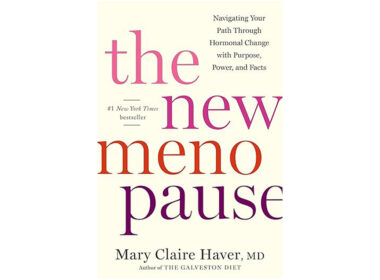Nearly 80% of women will experience fibroids at some point in their lives, and many will be encouraged to go on hormonal birth control for symptom relief. But estrogen and progesterone can stimulate fibroid growth, and all forms of hormonal contraception contain one or both of these hormones. What’s a woman to do? Are there really benefits of hormonal birth control in relation to fibroids? Here’s what we know.
What are uterine fibroids?
If you’re unfamiliar with uterine fibroids, this Natural Womanhood article covers all the basics. To quickly recap, fibroids “are growths made of smooth muscle cells and fibrous connective tissue. These growths develop in the uterus and appear alone or in groups. They range in size, from as small as a grain of rice to as big as a melon. In some cases, fibroids can grow into the uterine cavity or outward from the uterus on stalks.”
The more severe symptoms of uterine fibroids are very similar to endometriosis—pelvic pain, heavy menstrual bleeding, pain in the lower abdomen, and abdominal pressure due to compression of pressure on the internal organs surrounding the uterus.
Remarkably, according to Johns Hopkins Medicine, up to 77% of women will experience uterine fibroids and the vast majority of cases are in women aged 15-49. Importantly, over 99% of fibroids are non-cancerous. Interestingly, older research suggests that the more term pregnancies a woman has, the lower her risk of fibroids. In this 1986 study, women with five term pregnancies had just one quarter of the risk of fibroids compared to those who had had none [1].
How hormones promote fibroids
While the exact cause of fibroids isn’t yet known, research has shown a clear connection between hormone levels—particularly estrogen and progesterone—and the size and frequency of growths. Estrogen and progesterone are the hormonal stimulus that feeds fibroid growth. In postmenopausal women, (when the ovaries have stopped producing estrogen and progesterone), fibroid growth and occurrence are half as likely to occur as in premenopausal women [2]. Supporting this idea even further, there are no known cases of uterine fibroids in prepubescent girls [3].
Before we dive into the effect of hormonal birth control on fibroids, let’s look at the active ingredients in hormonal contraception, i.e., the (synthetic) hormones themselves.
Estrogen, testosterone, and fibroid growth
Imagine your cells as little houses with mailboxes on the outside. Let’s call these mailboxes cell receptors. These cell receptors are special proteins that sit on the surface of the cell and wait for specific messages (sort of like a mailbox slot that will only accept letters).
Compared to normal uterine tissue cells, the cells of uterine fibroids have significantly more “mailboxes” that respond to estrogen. Fibroid tissue also has a higher level of an enzyme called aromatase that breaks testosterone down into estrogen. (Wait, isn’t testosterone a “male” hormone? Men do produce far more, but women also produce testosterone in small amounts.)
Every time the aromatase from the fibroid breaks testosterone down into estrogen, the estrogen mailboxes pick it right up, creating a self-feeding cycle. If there is also excess estrogen in the bloodstream, whether due to a reproductive issue or from a medication containing that hormone (like birth control), all those estrogen mailboxes keep picking it up, continuously feeding the growth of the fibroid [4].
Progesterone and fibroid growth
According to the USA Fibroid Center, when estrogen and progesterone are not properly balanced and estrogen dominates, uterine fibroids can result. One Chinese study, published in Pharmaceutical Bioprocessing, states that while the cause of uterine fibroids (called ‘leiomyomas’ in this study) is uncertain, “estrogen is the main promotion factor for the growth of uterine leiomyomas, and progesterone plays a synergistic effect” [5]. Since the two hormones are so often found together in conditions like uterine fibroids, endometrial cancer, breast cancer, and endometriosis, it can be tricky to parse out the specific actions of each of the hormones on their own.
How might progesterone specifically cause fibroid growth? Much like uterine fibroids have receptor “mailboxes” for estrogen, they also have progesterone receptors that lead to fibroid growth. One study in Endocrine Reviews noted that progesterone promotes cell replication and cell growth, and builds up the structure of the fibroid [6].
Progesterone also suppresses “programmed cell death” (PCD). Normally, any damaged or abnormal cells are removed from the body via PCD. But excess or imbalanced progesterone may lead to the growth of abnormal cells (such as those found in fibroids), rather than the healthy uterine tissue that should be there. Progesterone also decreases production of cytokines, molecules that carry information between cells. This can contribute to uncontrolled cell growth [7].
Studies on the Depo-Provera shot show the connection between progestins and fibroids
Acting similarly to naturally occurring progesterone, the role of synthetic progestins in fibroid growth is clear from several studies of the progestin-only birth control shot, Depo-Provera. One trial published in the International Journal of Gynecological Pathology compared three groups of women [8]. One group was currently taking Depo-Provera, the second group was not on (nor had ever used) any hormonal birth control, and the third group was using an estrogen-plus-progestin combination contraceptive. Researchers found that the women using progestin-only contraception showed significantly more fibroid cell replication and growth than the other two groups.
Another study published in Clinical Obstetrics and Gynecology stated that “[uterine fibroid] proliferation is higher in post-menopausal women receiving combined estrogen and progesterone therapy compared with estrogen therapy alone” [9].
Oral contraceptives seem to protect against fibroids
It would make sense that since both estrogen and progesterone (or its synthetic counterpart, progestin) are clearly linked to an increase in the growth and development of uterine fibroids, hormonal birth control should also be problematic. However, this may not be the case. A number of studies actually suggest the protective effect of hormonal birth control against the development of uterine fibroids.
For example, a study from the journal Medicina compared a group of 140 women using hormonal contraception (93.3% of whom were taking an estrogen-plus-progestin formulation) to a group of 206 women who had never used hormonal contraception. Out of the women taking birth control, only 37.8% of them were ever diagnosed with uterine fibroids while 59.6% of the never-used group were diagnosed [10].
The same article cited another study looking at 349 women, 274 of whom were using contraception (84.5% of whom were taking oral contraceptives). 34.3% of women on HBC and 63.4% of women not on HBC had fibroids [10]. In the discussion section, the researchers state: “In our study, we show that those who have not already had uterine fibroids may have a smaller chance of developing them when taking contraceptive medications, especially pills that contain low-dose estrogens. The positive protective effect of OC has been particularly seen in the group of 30–40-year-old patients” [10].
Length of use of oral contraceptives also seems to protect against developing fibroids
Similarly, a case-control study from the International Journal of Obstetrics and Gynecology studied 843 women diagnosed with uterine fibroids within the past two years and 1557 women without fibroids. Researchers found that out of the 614 women who reported ever using oral contraceptives, the longer they had been using the medication, the lower their risk of fibroids. Compared to “never-users,” women who used contraception for 4-6 years were 20% less likely to have fibroids, and those who used it for seven or more years were 50% less likely [11].
In another study, out of 535 women with fibroids and an additional 535 who did not, “risk […] decreased consistently with increasing duration of oral contraceptive use; the risk of fibroids was reduced by some 31% in women who had used oral contraceptives for 10 years” [12].
The study mentioned earlier from Medicina also talks about duration of use stating, “the risk of fibroids is consistently decreasing with the increasing duration of oral contraceptive use; the risk of fibroids was reduced by some 31% in women who had used oral contraceptives for 10 years [10].
Those protective effects seem to go away after stopping birth control, however, with ex-users having the same risk as never-users [10].
But researchers don’t know why
Still, despite some studies showing a protective effect against fibroids with contraceptive use, “epidemiological data on the relationship between the use of oral contraceptives and [fibroids] is inconsistent,” states a paper in the International Journal of Fertility and Sterility [2].
Another published article in the Journal of Taibah University Medical Sciences states that even after a case study with 478 women, “We did not have sufficient evidence to demonstrate a statistically significant association between contraceptive pill use and uterine fibroids.” [13].
The Medicina study likewise reported that while “contraceptive use decreases the probability of uterine fibroids, especially among patients between 30–40 years of age […and] the association between oral contraceptive use and uterine fibroids has been studied extensively, no clear patterns have emerged” [10].
Very few studies suggest that oral contraceptives increase fibroid risk
One potential, though speculative, reason that hormonal contraceptive users are less likely than non-users to be diagnosed with uterine fibroids may be that hormonal birth control suppresses fibroid symptoms. Fewer symptoms would likely correlate with fewer diagnoses.
And indeed, some research suggests that hormonal contraceptive use may be associated with fibroid growth. For example, a study from China looked at 1300 women–half of whom had uterine fibroids, and the other half without. They found that women currently using HBC had almost doubled the risk of fibroids compared to women who had never taken it [5]. Out of the women who had never been on HBC, there was a 50% chance of developing uterine fibroids. Out of the group of 180 women who were currently on HBC, 113 had uterine fibroids compared to only 67 that didn’t.
Still, there are far fewer studies that suggest a positive correlation between fibroid growth and contraceptive use than there are ones that suggest a protective effect against fibroids with contraceptive use.
Bottom line, what’s the connection between hormonal birth control and uterine fibroids?
The lack of conclusive evidence on whether hormonal birth control reduces fibroid risk is perhaps due to the fact that, according to Drugs.com, there are currently 259 different formulations of hormonal birth control on the market. The conflicting reports may be a result of the wide variety of concentrations of estrogen and/or progestin in each medication. It’s also important to note that even if some forms of hormonal birth control may protect against uterine fibroids, all forms of hormonal contraception come with a host of other potential harms.
Women looking for fibroid symptom relief have the option to pursue non-hormonal birth control treatments (such as surgical removal of fibroids, known as myomectomy) when they seek care from a healthcare professional trained in restorative reproductive medicine. For other fibroid treatment options, see the Natural Womanhood article, “Uterine fibroids: Causes, symptoms, and treatments.”







